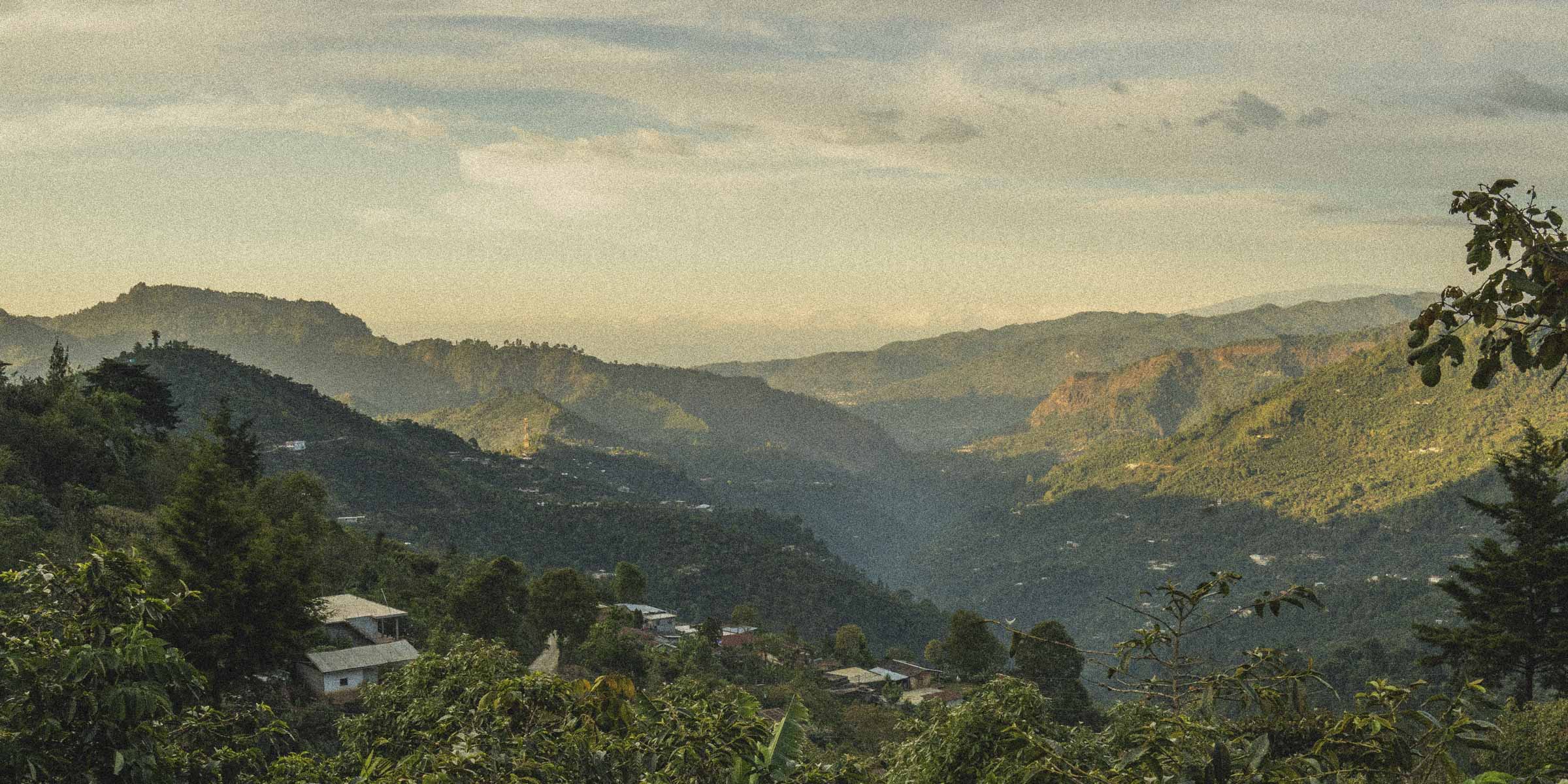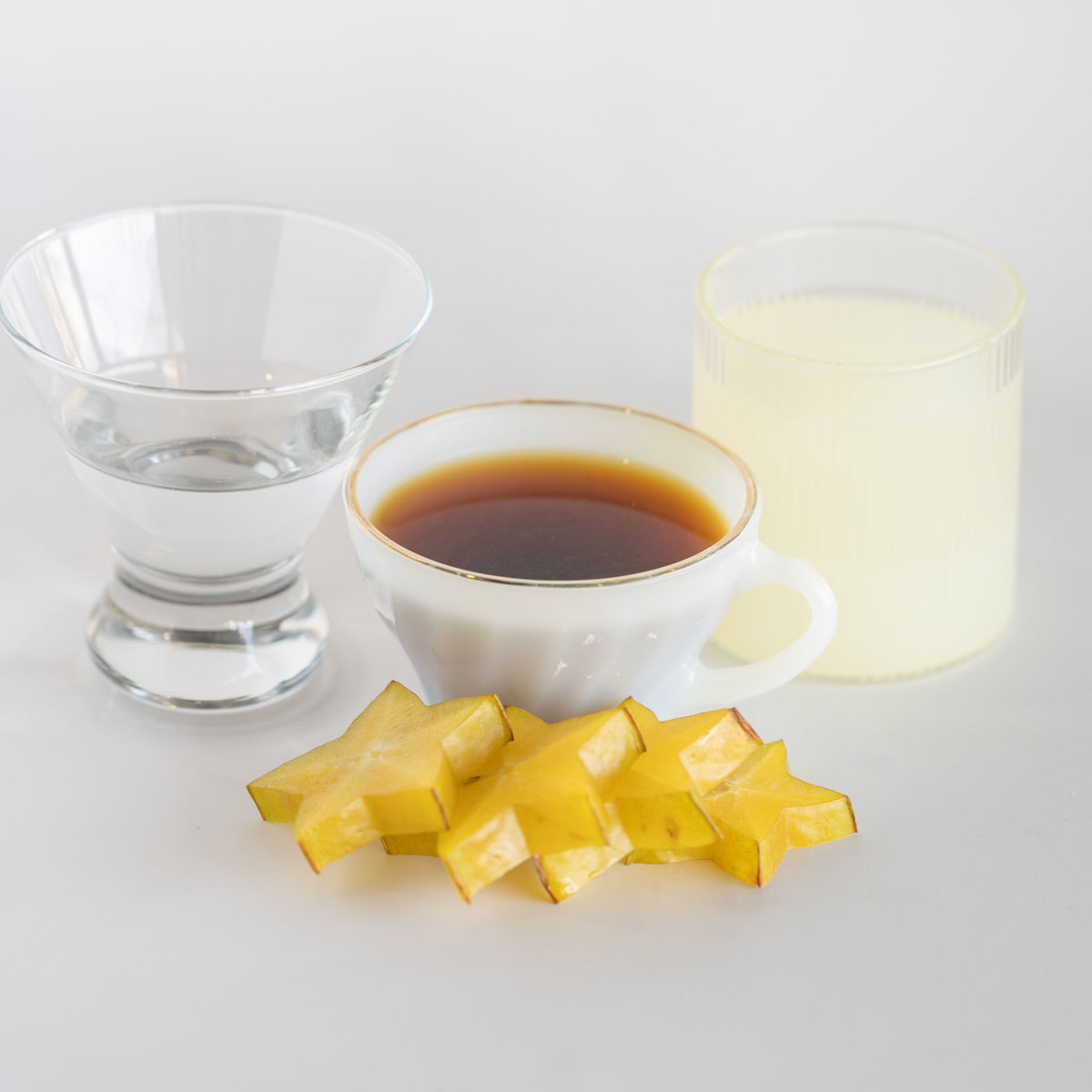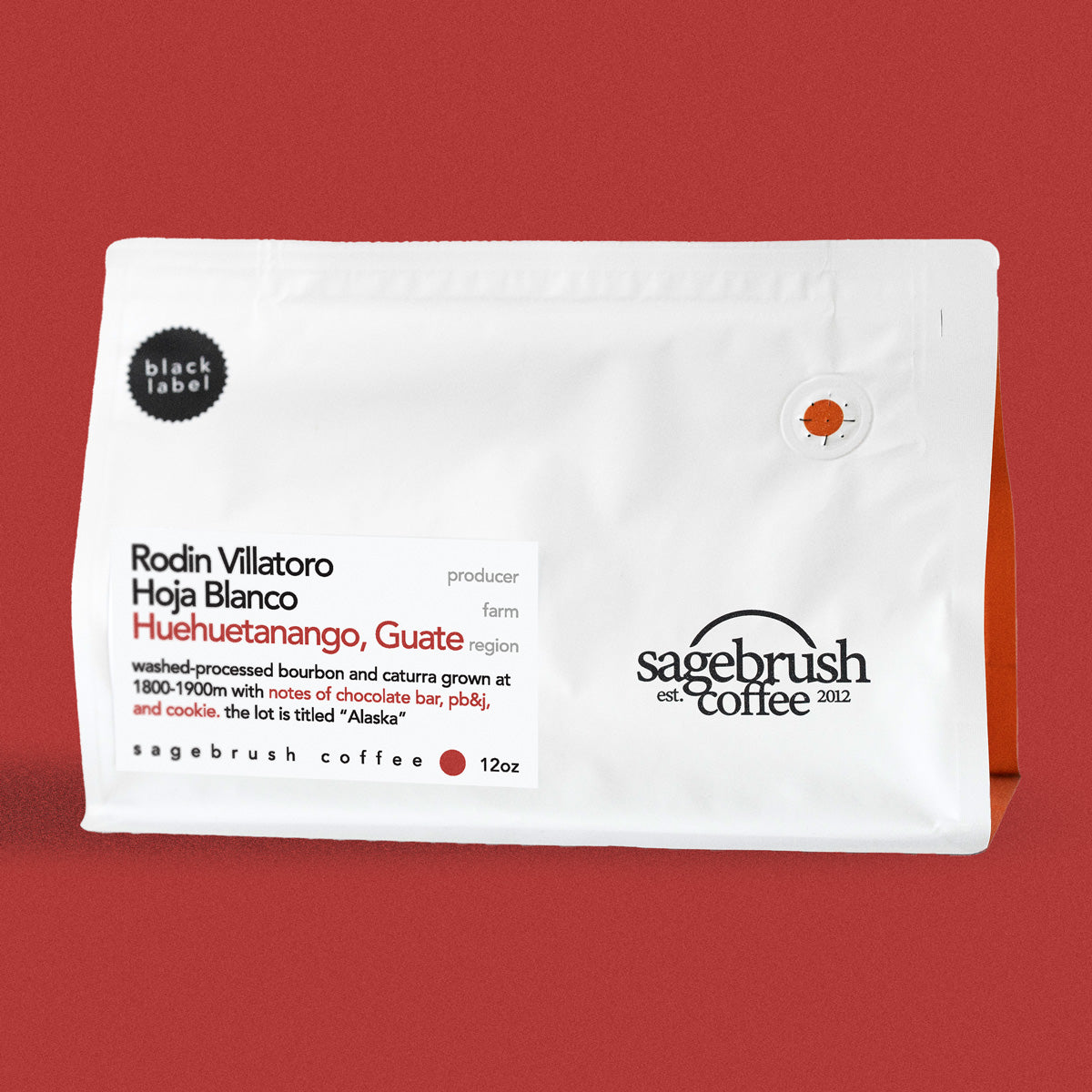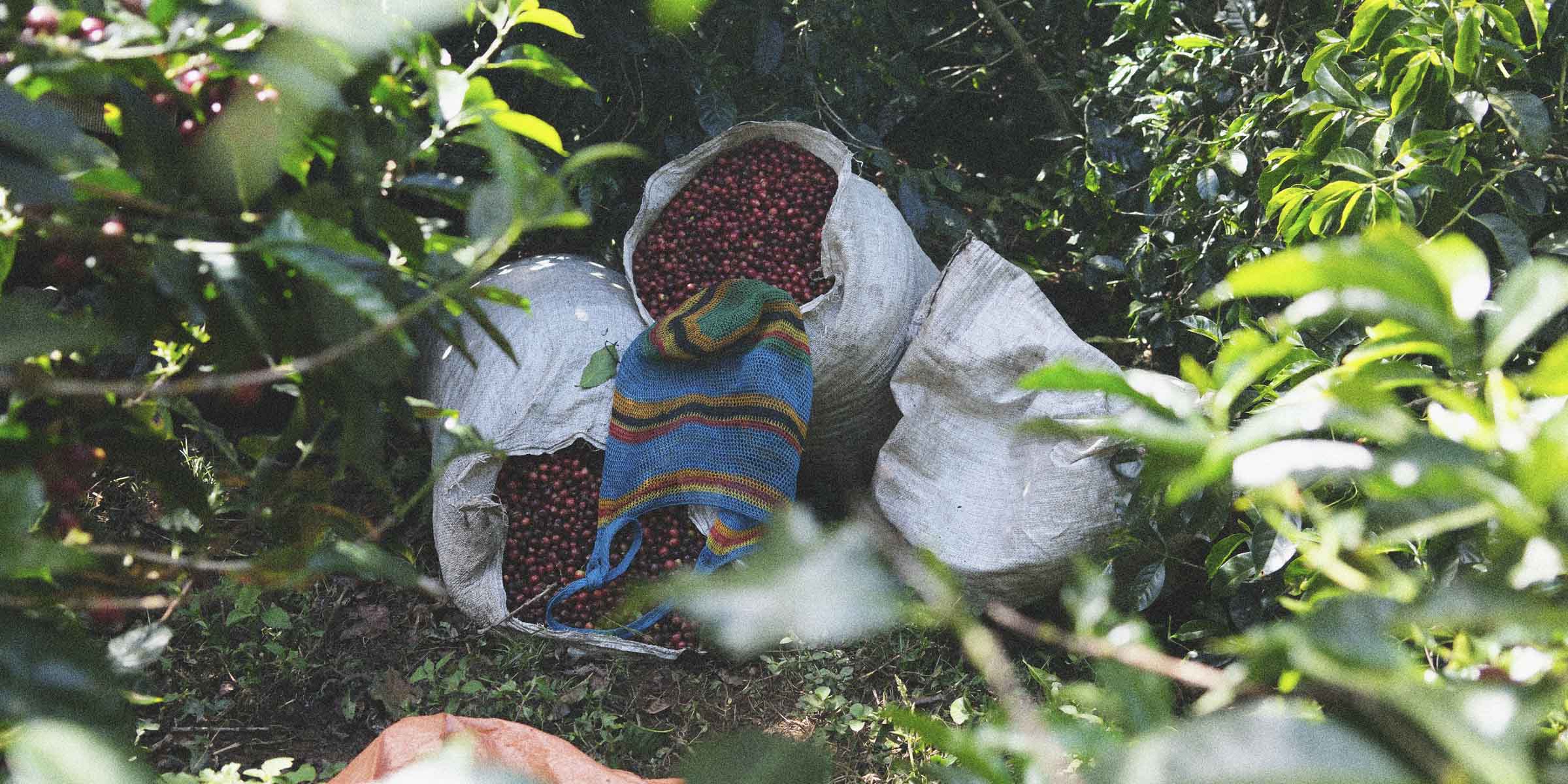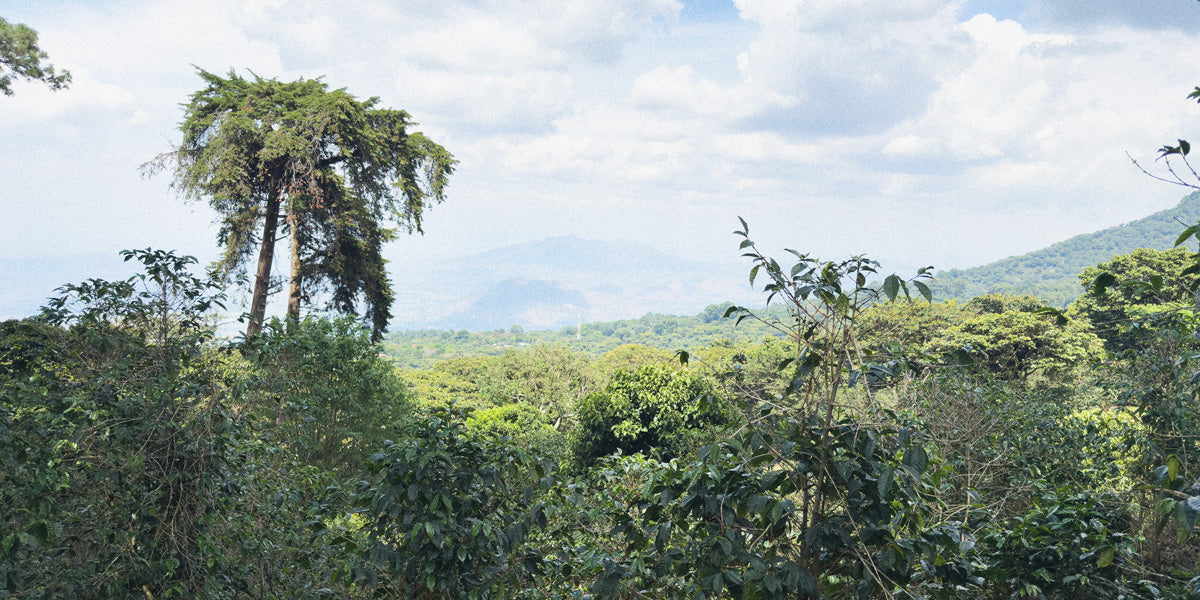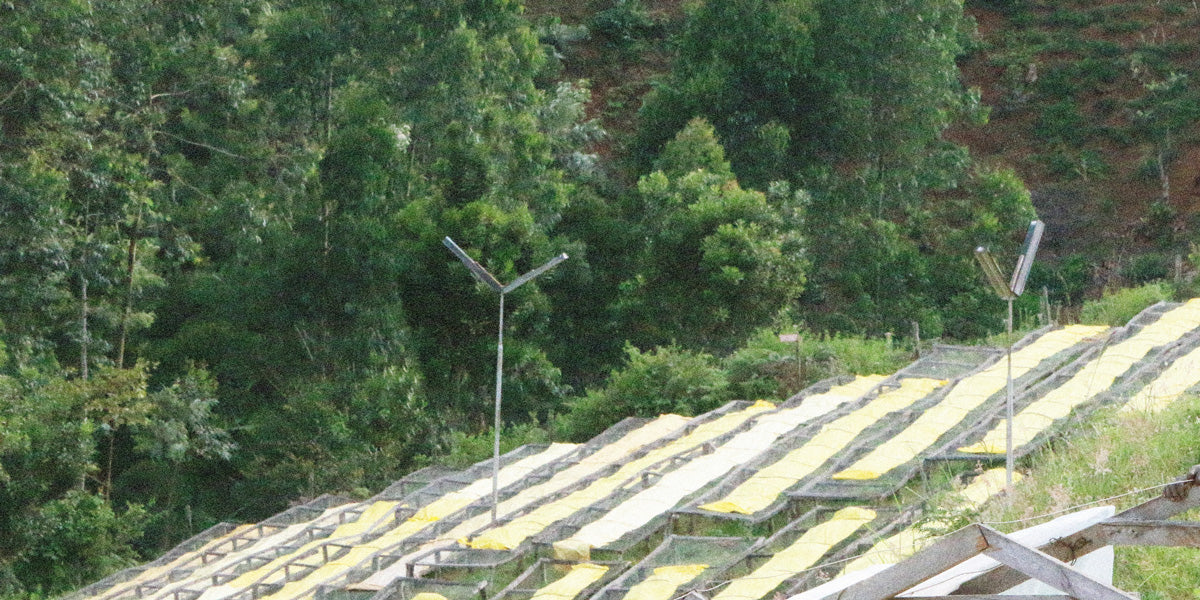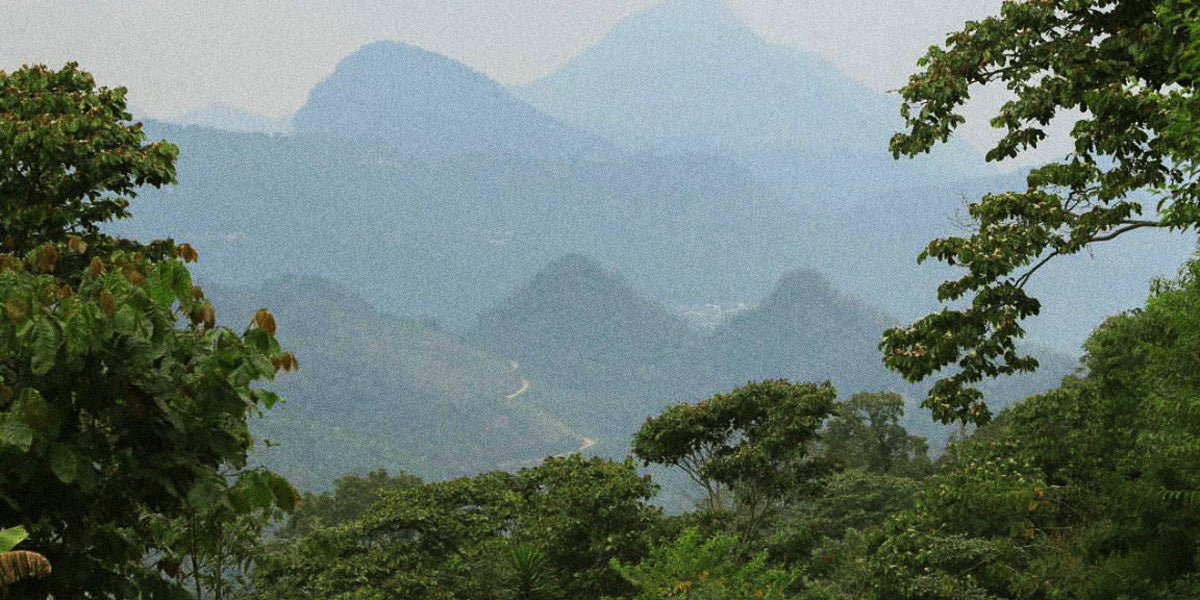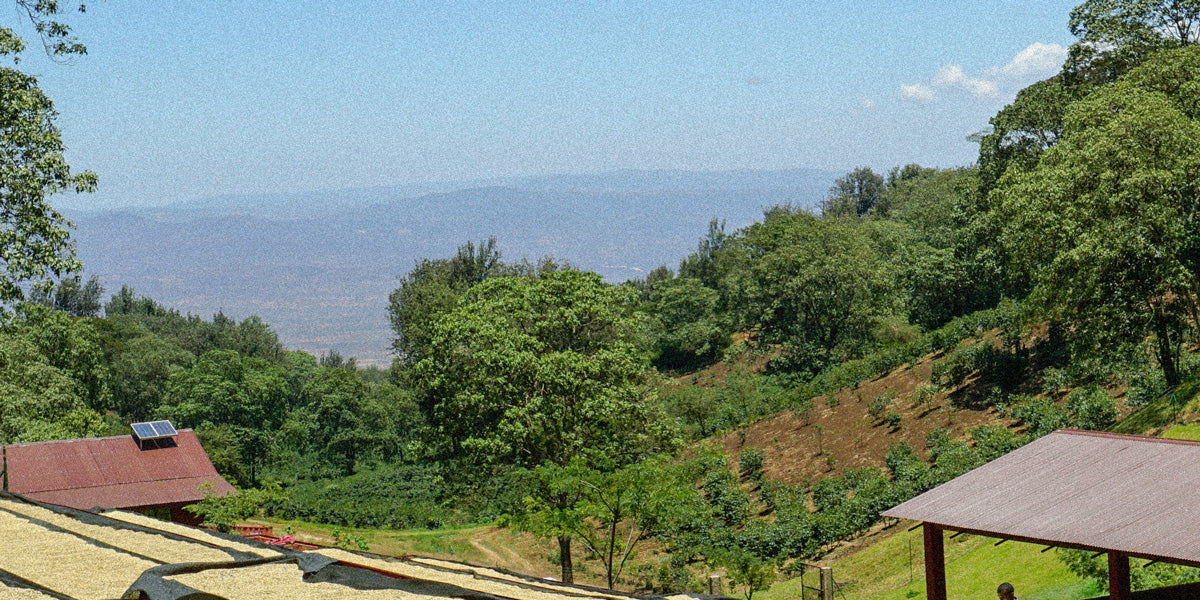Coffee Terroir Overview •
Read our Terroir articleCoffee Terroir Guide: The Balance & Complexity of Guatemalan Coffee
We’ve been sourcing directly from coffee producers in Guatemala for years. And for good reason! Guatemala is consistently ranked as one of the world's largest high-quality coffee producers. In 2023, they exported over a billion dollars’ worth of coffee!
But it wasn’t always this way. Before we get into what we love about Guatemala, here’s a brief recap of how coffee came to Guatemala in the first place.
Guatemalan Coffee History
Most people believe that coffee was first brought to Guatemala during the Spanish conquests in the mid-18th century. The story goes that Jesuit missionaries brought it over, planting the trees as ornamental decorations for their Antiguan monasteries. But it wasn’t until the 1850s that coffee became a crop for the country.
Prior to this, Guatemala’s chief export was cochineal–the natural red dye made from dried and crushed cochineal beetles. As synthetic dyes were introduced to the market, demand for cochineal fell sharply, leaving Guatemala with an aching void in their economy.
Enter coffee!
It had the potential as a crop to be harvested in greater quantities than cochineal, as well as attracting higher market prices and being easier to transport across long distances. The Guatemalan government decided it was all in.
They established the Commission for Coffee Cultivation and Promotion to educate coffee farmers. They distributed a million coffee seeds across the country to encourage growth (it worked!). By 1880, 90% of the country's exports consisted of coffee.
But although the coffee industry quickly became the backbone of the economy, it wasn’t all sunshine and rainbows for the people of Guatemala. In order to expand coffee plantations, many indigenous Mayan people were deprived of their land. This led to a huge socio-economic disparity between the wealthy landholding coffee elite and the majority indigenous population. Eventually, these tensions escalated into a full-blown civil war in 1960 between the U.S.-backed authoritarian government and a coalition of rebel groups–a conflict that would last for 36 years.
Although the war devastated much of the Guatemalan economy, the coffee industry survived.
In the early 2000s, the industry began to recover, shifting its focus to specialty coffee and making a name for itself in that world. There is also an increasing focus in-country on helping small-scale farmers access fair trade markets and sustainable practices through its national coffee association, Anacafé.
Why We Love Guatemala
Guatemala is special to us for several reasons.
For one, they produce a consistently excellent product. Every year, our best-selling coffees are Guatemalan. And it’s easy to see why! Geographically speaking, Guatemala has all the right ingredients to grow truly delicious coffee. It has high altitudes, rich, volcanic soil, plenty of rain, and over 300 diverse microclimates!
Together, these attributes combine to create coffee that is balanced, bright, and complex. We particularly love the coffees from Guatemala with a sweet caramel note, creamy vanilla ice cream mouthfeel, and rich chocolate finish.
But the biggest reason we love Guatemala is the relationships.
Guatemala was the first place we took an origin trip as roasters; the first time we got to see firsthand the kind of work that goes into operating a coffee farm. We got to see the labor that goes into picking coffee cherries by hand; the time and care that goes into processing them at a mill.
We knew we’d meet producers and learn about their lives, but there was something magical about sitting around a table with 10 coffee-producing families and hearing about the struggles and challenges they face on a daily basis. They may be different than ours, but we’re all in the same industry going after the same thing: great coffee!
We live a world apart and yet, have everything in common.
Our mission as a company is to put on display the hard work of the coffee producers. Every time we get to visit places like Huehuetenango in Guatemala, we are reminded of this hard work all over again. What we spend a matter of minutes roasting and brewing, they labor to grow for years! We’re really just trying to not mess up all of the work done before us.
When we think about Guatemalan coffee, we don’t see a country or a supply chain. We see faces. The faces of producers who have become more than business partners to us; they’ve become friends.
Coffee is about so much more than a drink. It’s about community. Conversation. Connection. That is what we think of when we think of Guatemala. And that is what we strive to bring you in every cup!



